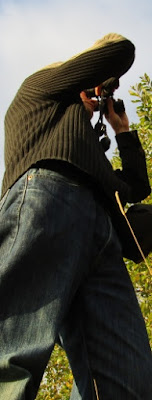We are all Homo patchiensis. To explore our surroundings - our patch -
taking a close interest in the plants and animals is in our nature.
Our hunter-gather ancestors had an intimate understanding of, and connection
with, their patch – their survival depended on it. The change to
agriculture, and seeing ourselves as apart from nature - controlling nature -
happened only in a recent blink of an evolutionary eye. So, the brains that
equipped us for hunting and gathering are the brains we have to this day - we're wired the same way.
10,000 years ago we would have recognised most of the plants that grew in
our area – which were poisonous, which were good to eat, which would have
fruits later on, which were medicines. We would have been avid bird
watchers. We would have been familiar with the mammals, which were
dangerous, which needed a certain technique to hunt. Our Mesolithic brains
could store enormous amounts of information about our immediate surroundings –
just as our Chimpanzee cousins do today.
It’s telling that we have the words skein, gaggle, and flock to describe a
collection of geese in the air, on the water and on land. Geese would have been
sort after quarry, so it was important to convey what they were doing and where
they were.
So the ‘patch watcher’ of today is just doing what’s encoded in our
genes. The hunting instinct is still there but it’s been replaced by
substitutes. Photography is an obvious example, from the stalking of the ‘prey’
to the digital end product. 'Shoot' and 'capture' are words used in
photography, attesting to its hunt-parallel. You can even demonstrate
your hunting prowess by posting a photo online. 'Great shot' and 'excellent
capture' come the plaudits on Facebook.
I think in my case identifying something plays a similar role. There’s a
certain satisfaction in putting a name to something. The, admittedly illusory,
feeling that you’ve understood it a bit more - you've pinned it down.
Hunter-gatherers are often wrongly romanticised. It's true they had less
impact on their environment than their descendants. They were though,
responsible for the mass extinctions of mammals and birds.
Even so they lived 'better' lives than the agriculturalists. They had more
leisure, had a better diet and their 'work' was more interesting. The whole
concept of time, came with the worry about the future, that went hand in hand
with farming.
In the end though our connection to nature means that Homo sapiens is Homo patchiensis. |
 |
Homo patchiensis
1 male 9/10/2015
Diagnostic features
- binoculars and camera
- characteristic stopping and looking at things action
- jirky jizz
- little, or no, fashion sense
- call: 'morning'
- habitat: the patch |
|
Recommended Posts For You
Get this
An interesting and thought-provoking post. :) It's great that many of us are now content to collect/hunt with just our eyes and cameras (still perhaps some way to go though!), and I think it's so important to retain that connection with nature albeit in quite a different way no doubt to how our ancestors would have done.
ReplyDeleteThanks a lot Jan, I've been reading a lot about hunter gatherers, which is what provoked these ramblings. Unfortunately I think children, these days have much less of a connection with nature - that cant be a good thing.
Delete